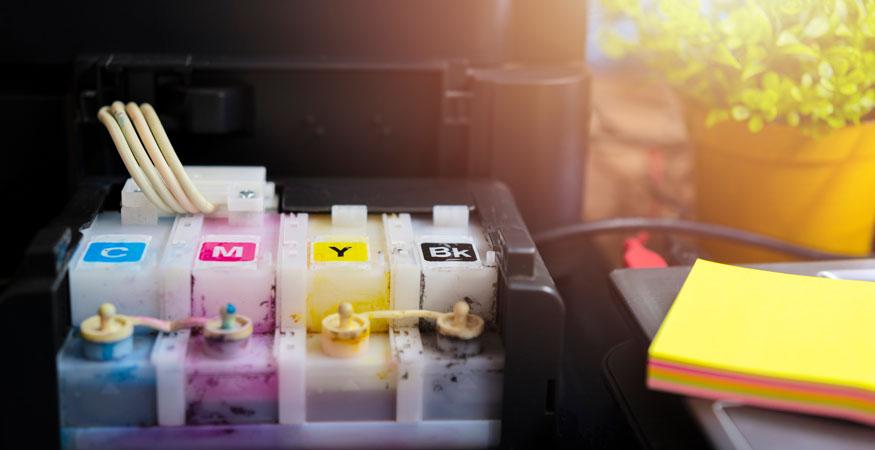Office printers are often overlooked as a potential gateway for hackers to steal your organization’s confidential information.
How is this possible? Office printers typically have a hard drive, operating system, memory and the ability to be connected to a network – just like any other computer at your business. A hacker could use your printer as a backdoor to gain access to your network. Are you prepared for a possible printer cyberattack?
In addition to hackers, there could be internal threats lurking within your organization.
For instance, employees could knowingly or unknowingly pick up more pages than just their print job. It’s common in many organizations for print jobs to stack up on a shared printer. Some of that printed information might be confidential.
And have you considered others that may be visiting your organization? Confidential paperwork left on printers could potentially be viewed by unwanted eyes.
In order to better protect your printer fleet from cyberattacks and data breaches, consider these seven network printer security best practices:
- Secure the Network
- Secure Your Machines
- Get Up to Date
- Implement Image Overwrite
- Control Access
- Collaborate with Stakeholders to Create a Print Security Plan
- Execute a Plan to Continually Monitor the Security of Your Print Environment
RELATED: How to Make Your Printers More Secure
Secure the Network
Oftentimes, businesses may have more printing devices connected to their network than they realize. Network traffic should be secured with IPSec and 802.1x. In addition, users should be authenticated by the use of a password such as a PIN or security badge.
Secure Your Machines
It’s important to secure print devices in areas that can be monitored and locked down during off hours. And be sure to change default passwords, turn off Internet Printing Protocol and use an encrypted connection when accessing control panels.
Get Up to Date
Firmware and driver updates provide new or improved security features and patch known security holes and other problems. Make sure your devices are kept up-to-date. Downloading and testing the firmware is suggested, before deployment.
Implement Image Overwrite
Data stored on hard drives should be encrypted. Later, when discarding the machine, remember to perform a Department of Defense level erase before disposal.
Control Access
You should know who is using which of your printing devices and when they are used. This can be accomplished by password-protecting printers through the use of card keys, mobile devices or PIN codes to hold print jobs until the authorized user unlocks the machine, preventing document theft or unintentional viewing. User authentication is key. This best practice is often overlooked, but in the event of a data breach, could offer important information that may aid in tracking the source of the data breach and prevent additional damage.
MANAGED PRINT CASE STUDY: Defusing a Bomb Threat
Collaborate with Stakeholders to Create a Print Security Plan
This plan should establish standardized print security procedures for all of the printers and hardware in your fleet. Be sure to include best practices for employees and their printer usage, what to do in the event of a security breach and how to restore any lost information.
Execute a Plan to Continually Monitor the Security of Your Print Environment
After your print security plan is in place, it’s critical to continually monitor and audit your print environment. Quarterly or monthly audits are recommended to keep your business safe and secure from security breaches. Continuous monitoring and auditing may be conducted in-house by your IT staff or consider contracting through a Managed Print Service (MPS) provider.
What is Managed Print Service?
Working with a MPS provider can be beneficial for organizations of all sizes.
A trusted MPS partner can walk you through the entire process from conducting a needs analysis, to creating a print security plan and monitoring the security of your print environment. In addition, a MPS partner can create peace of mind and reduce headaches for both you and your organization by providing just-in-time toner or ink, conduct real-time analysis of your printer usage, free up your IT team’s valuable time and more!
Don’t wait until something happens at your organization. Be proactive and address printer security before a data breach occurs. Get started by downloading your free copy of the Quick Guide to Print Security, today.
I hope these best practices assist your business along the path towards better printer security. If you’d like to learn more, contact the print security experts at Troyka-TC.










